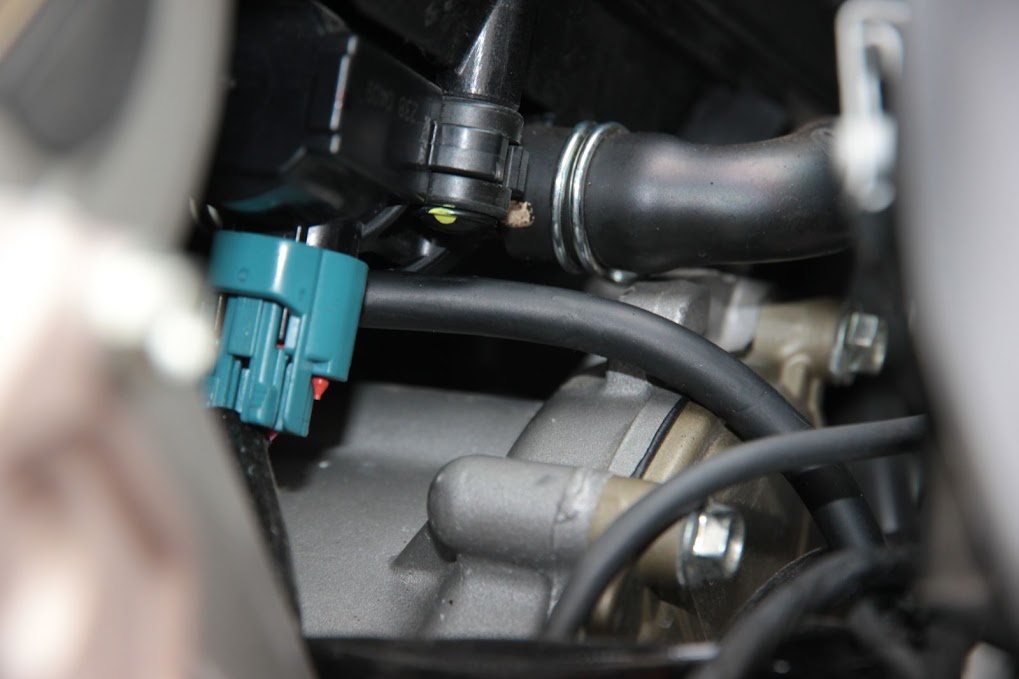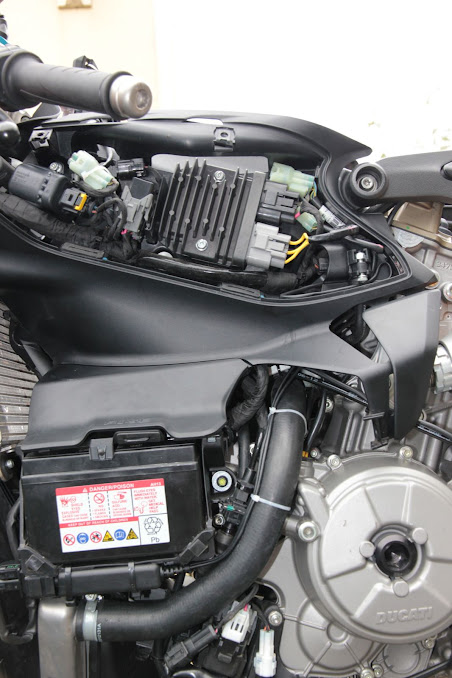- Joined
- Jun 11, 2012
- Messages
- 288
- Location
- Nz
I have just finished installing 2 LC-1 wide band O2 sensors to compliment my TuneBoy setup. Wideband sensors will be necessary for many tuning options not just the TuneBoy. There was a bit more to it than I had hoped so I'll leave some bread crumbs here for anyone that wants to follow down the same path.
The main thing I think I hoped to avoid was removing the exhaust system - but that ain't going to happen so just get on with it, it's not a big deal.
You will be taking off the mid and lower fairings, the tank, and lifting the seat sub-frame, then taking off the exhausts so make sure you have the right tools before you start !
A couple of tools to note are:
Procedure:
Some photos from my install may be of use....
LC-1 install photos on picasa
Good luck and happy spannering...

The main thing I think I hoped to avoid was removing the exhaust system - but that ain't going to happen so just get on with it, it's not a big deal.
You will be taking off the mid and lower fairings, the tank, and lifting the seat sub-frame, then taking off the exhausts so make sure you have the right tools before you start !
A couple of tools to note are:
- a Torx T40 for the sub-frame bolts and on the left side this will need to be turned by a long reach extender with a swivel or universal drive.
- a ball headed 6mm Allen wrench for the rearward exhaust bolts which are somewhat inaccessible.
Procedure:
- Remove mid and lower fairings & Seat.
- Remove the tank. There is a dry connect in the tank/airbox space and breather at the front right to disconnect.
- Remove or completely loosen the lower bolts holding the seat sub-frame using the T40. Now pivot the whole sub-frame into the air and ensure there is enough tension in the top bolts to hold it there.
- Remove bolts at front of silencers 8mm head, 10mm nut (hold with a 3/8 swivel drive).
- Remove the larger bolts holding the rear of the exhaust. 8mm cap screw with 6mm Allen drive. If you use a ball head Allen here then you won't need to remove the left hand rearset, otherwise you do.
- Remove the springs holding the silencers near the flapper valve. Spray some CRC on the slip joint then wiggle the silencers off.
- Remove the other springs from the exhaust headers. Spray some CRC on the slip joints. Now the flapper valve section kind of rotates and stretches away from the front header and the rest follows easy.
- Unhook the standard sensor wiring and remove the sensors.
- MAKE SURE YOU HAVE PERFORMED ANY 'FIRST POWER UP' OR 'FREE AIR CALIBRATION' ROUTINE AT THIS POINT. YOU DO NOT WANT TO FIND THAT HAVE TO COME BACK HERE RIGHT AFTER YOU HAVE JUST TIGHTENED THE LAST SCREW ON THE FAIRINGS !!!
- Put some high temp thread lube(something like Coppercoat) on the threads and fit the wide bands to the header tubes. (You will need to loosen/remove the heat shield from the loop tube)


- Reassemble the exhaust system and lower the seat sub-frame. The rear sensor cable passes underneath the BBS unit and through the rear right opening in the sub-frame and past the seat lock mechanism.

The front sensor cable runs adjacent to the starter motor cable and cab be cable tied there for support.

- Cable tie the front controller to the bottom of the battery box and run it's output cable through the 'V' between the cylinders.

(It's a bit of a wiggle in the dark but you'll find the right way before long).
It should come out on the right side of the bike just in front of a green connector.

The serial port wires can be cable tied to the coolant hose and run up to the back of the bike under the BBS and come out with the diag connector. (Extra length can be stored a coil under the seat area.

- The electronics housing needs to be removed to gain access the the front connector and the ECU must first be removed to gain access to the third screw retaining the electronics enclosure!

The cable for the front controller should be supported with a cable tie to the 'hydraulic sensor thingy' just above the connector.

- The rear controller fits nice enough under the right side of the seat with the output cable running forward through the sub-frame in the original cable cleat and into the electronics housing. A little sticky foam tape will stop it rattling around in there.

- if you are using an OT-2 then it fits nice under the seat cowl.
- put everything back, ride, tune, & be happy !
Some photos from my install may be of use....
LC-1 install photos on picasa
Good luck and happy spannering...





